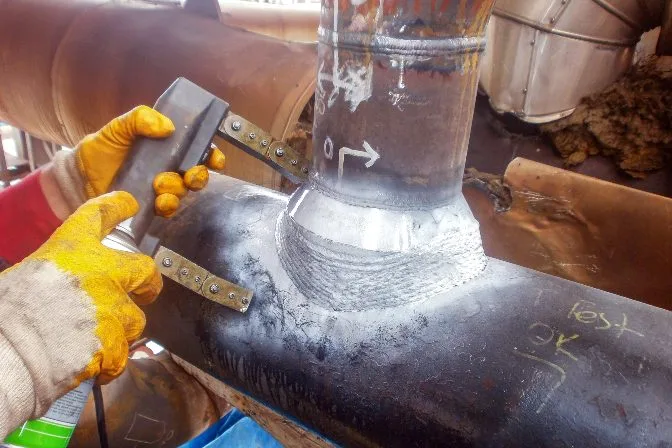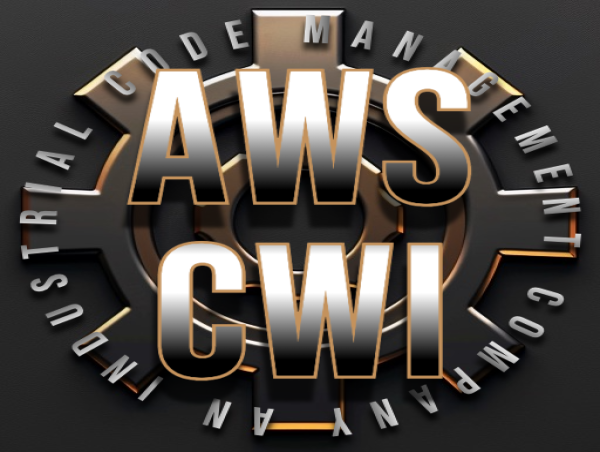How Welding Inspection Milwaukee Can Save You Money over time
How Welding Inspection Milwaukee Can Save You Money over time
Blog Article

Discovering the Various Methods and Specifications of Welding Assessment for Getting Conformity and Dependability in Engineering Applications
The importance of welding inspection in design applications can not be overemphasized, as it works as an important protect for ensuring architectural integrity and compliance with sector standards. Different approaches, including visual assessment and progressed non-destructive testing strategies, give important insights right into the top quality of welds. Furthermore, adherence to established regulatory criteria such as those from AWS and ASME develops a structure for accountability and excellence. The landscape of welding examination is consistently progressing, prompting a more detailed exam of emerging methods and their implications for engineering integrity. What might these advancements require for future projects?
Significance of Welding Evaluation
Welding examination plays a critical duty in making sure the stability and safety of welded structures. This process involves the organized exam of welds to validate compliance with fixed criteria and specs. The significance of welding evaluation can not be overstated, as it functions as a guard versus potential failures that could result from poor welding techniques. Through strenuous inspection, issues such as fractures, spaces, and inadequate blend can be identified early, therefore stopping devastating failures that may lead to architectural collapse or security risks.
Additionally, welding examination is vital for preserving quality assurance throughout the welding procedure. It makes certain that the welds meet the necessary mechanical and physical homes required for their intended applications. Regular evaluations additionally cultivate a society of accountability and continual renovation within welding procedures, motivating adherence to ideal techniques and industry requirements.
In controlled sectors such as construction, manufacturing, and aerospace, rigorous welding inspection protocols are mandated to follow legal and safety needs. Eventually, reliable welding evaluation not just shields human life and residential or commercial property yet additionally enhances the durability and dependability of welded frameworks, making it a crucial aspect of engineering and construction.

Usual Welding Evaluation Methods
A selection of evaluation techniques are used to analyze the high quality and integrity of welds, each customized to discover specific sorts of problems. Among one of the most typical techniques is aesthetic inspection, which entails a comprehensive examination of the weld surface to determine visible imperfections such as splits, damages, and inadequate fusion. This method is commonly the very first step in the inspection procedure because of its simplicity and cost-effectiveness.
Another extensively used technique is radiographic examination, where X-rays or gamma rays penetrate the weld to disclose internal defects. This technique is particularly effective for identifying porosity and inclusions within the weld product. Likewise, ultrasonic screening uses high-frequency sound waves to determine inner imperfections, providing a comprehensive evaluation of the weld's integrity.
Additionally, magnetic fragment assessment is made use of for ferromagnetic materials, permitting the detection of surface and near-surface flaws by observing and applying magnetic areas particle patterns. Lastly, color penetrant screening entails using a fluid dye to the weld surface, disclosing splits and various other gaps upon assessment. Each of these techniques plays an important duty in guaranteeing weld high quality and compliance with sector criteria
Non-Destructive Examining Techniques
Non-destructive testing (NDT) methods are important tools in the assessment of weld top quality, enabling inspectors to assess the honesty of welded joints without creating damages to the products. Numerous NDT methods are used to determine prospective issues, ensuring that welds fulfill the needed standards my site for security and efficiency.
One of one of the most common strategies is ultrasonic testing (UT), which makes use of high-frequency acoustic waves to discover internal flaws such as gaps or fractures. Radiographic testing (RT) utilizes X-rays or gamma rays to generate pictures of welds, exposing any type of stoppages within the material. Magnetic fragment screening (MT) is reliable for discovering surface and near-surface problems in ferromagnetic materials with the application of magnetic fields and contrasting particles.
Liquid penetrant testing (PT) is one more extensively used technique that involves applying a dye to the surface area of the weld, which permeates right into any kind of fractures, making them noticeable under ultraviolet light. Each of these techniques supplies distinct benefits and constraints, and the option of a proper strategy is crucial to accomplishing accurate analyses of weld stability. Eventually, the implementation of NDT strategies significantly adds to the reliability and safety of design applications.

Governing Requirements and Conformity
In the world of welding assessment, adherence to governing criteria and conformity is paramount to make certain the safety and security and integrity of bonded frameworks (Welding Inspection Milwaukee). Numerous organizations, consisting of the American Welding Society (AWS), the American Society of Mechanical Designers (ASME), and the International Organization for Standardization (ISO), have actually developed guidelines that govern welding methods and evaluation procedures. These criteria give a framework for quality control, detailing the necessary certifications for assessors and the methods for assessing weld integrity
Conformity with these governing standards not just boosts the architectural stability of bonded assemblies but also reduces threats connected with failings, which can have tragic effects. Assessments must be performed utilizing defined procedures, consisting of aesthetic, ultrasonic, and radiographic methods, to guarantee that welds fulfill defined standards.
Additionally, adherence to these criteria is frequently called for by legislation, specifically in markets such as construction, aerospace, and manufacturing. Regular audits and accreditations are essential to maintain conformity, consequently cultivating a culture of safety and security and top quality within organizations. Eventually, governing criteria and compliance work as the backbone of trusted welding examination practices, guaranteeing that crafted structures satisfy both efficiency expectations and security needs.
Finest Practices for Welding Inspection
While maintaining compliance with regulatory criteria is critical, carrying out best methods for welding inspection better boosts the safety and integrity of bonded structures. Efficient welding inspection starts with complete preparation, that includes recognizing the details demands of each task and ensuring assessors are well-trained in applicable approaches and standards.
Making use of an extensive examination list assists to make certain all crucial facets are examined, such as weld dimension, infiltration, and visual flaws. Non-destructive testing (NDT) techniques, such as ultrasonic or radiographic testing, web link ought to be utilized where ideal, giving an extra thorough evaluation of weld high quality without compromising the stability of the materials.
Paperwork plays a significant function in ideal methods; keeping precise documents of evaluations, consisting of photos, test outcomes, and compliance reports, guarantees accountability and promotes future assessments. In addition, fostering a society of open interaction in between welders and inspectors can cause early recognition of possible problems, advertising instant corrective actions.
Conclusion
In recap, the implementation of rigorous welding inspection methods and adherence to established my sources criteria are vital for guaranteeing compliance and reliability in design applications - Welding Inspection Milwaukee. Methods such as visual evaluation, radiographic screening, and ultrasonic screening serve as crucial devices in determining issues and keeping quality control. By cultivating a culture of liability and excellence, organizations can enhance the integrity and long life of bonded structures, eventually adding to the safety and efficiency of engineering tasks
Different methods, consisting of visual assessment and advanced non-destructive screening methods, supply vital understandings into the top quality of welds.Welding evaluation plays an important duty in guaranteeing the stability and security of bonded structures.A range of assessment approaches are employed to examine the quality and honesty of welds, each customized to detect certain types of problems.One more widely used approach is radiographic assessment, where X-rays or gamma rays pass through the weld to disclose internal flaws.In the realm of welding evaluation, adherence to regulatory criteria and compliance is paramount to make sure the safety and security and reliability of bonded frameworks.
Report this page